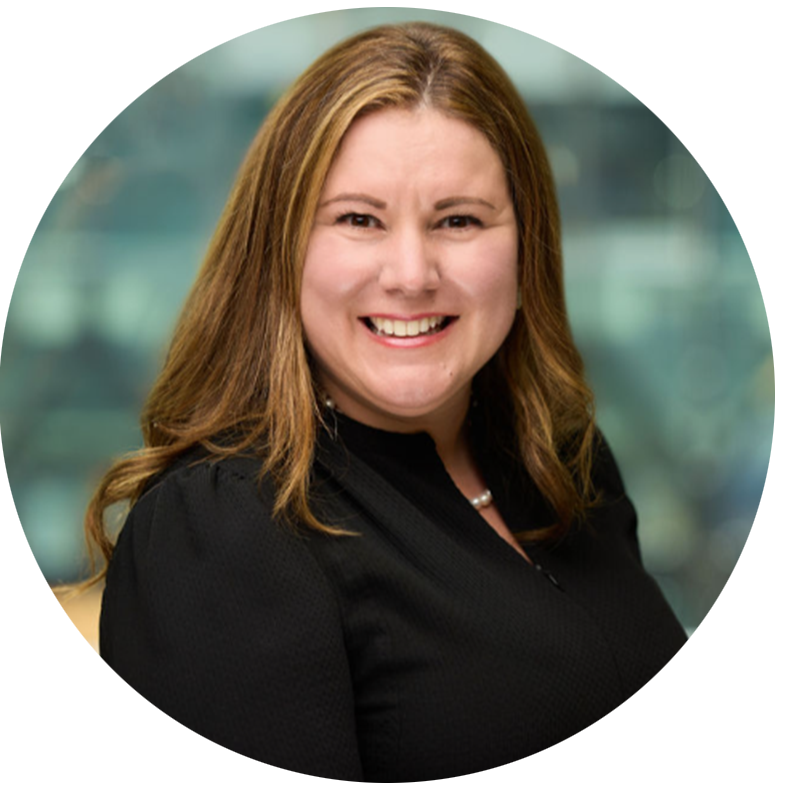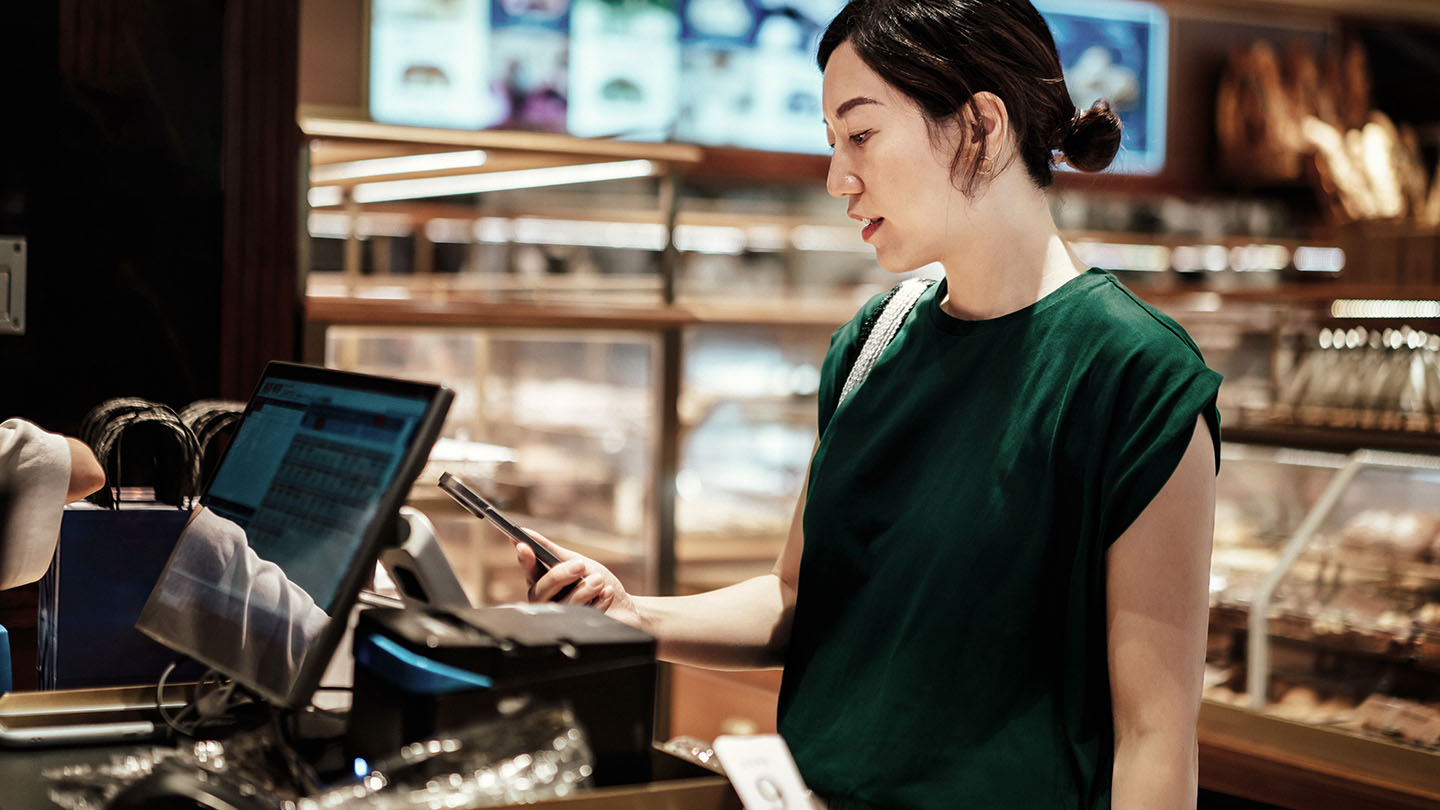For Companies and Institutions
-
Commercial Banking
We provide credit, financing, treasury and payment solutions to help your business succeed. We also offer best-in-class commercial real estate services for investors and developers.
-
Global Corporate Banking
We help clients achieve their long-term strategic goals through financing, liquidity, payments, risk management and investment banking solutions.
-
Investment Banking
Providing investment banking solutions, including M&A, capital raising and risk management, for a broad range of corporations, institutions and governments.
-
Institutional Investing
We support the entire investment cycle with market-leading research, asset management, analytics, execution, and investor services.
-
Payments
Your partner for commerce, receivables, cross-currency, working capital, blockchain, liquidity and more.
Key Links
For Individuals
-
Wealth Management
With J.P. Morgan Wealth Management, you can invest on your own or work with an advisor to design a personalized investment strategy. We have opportunities for every investor.
-
Private Bank
A uniquely elevated private banking experience shaped around you.
Explore a variety of insights.
Key Links
Insights by Topic
Explore a variety of insights organized by different topics.
Key Links
Insights by Type
Explore a variety of insights organized by different types of content and media.
Key Links
We aim to be the most respected financial services firm in the world, serving corporations and individuals in more than 100 countries.
Key Links
- Insights
- Payments
- Merchant Services
- Treasury meets D2C: Payments’ key role in digital consumer journey
Karen Webster (00:12)
Hi Sara, thanks for joining me today. A little preview of our upcoming series—“What's next in payments?”—where we're going to be digging into a lot of the trends that really happen at the intersection of new business models, payments and treasury services, and how banks are supporting that on behalf of their corporate customers. So Thanks for taking the time.
Sara Castelhano (00:37)
Thank you for the opportunity to have this discussion.
Karen Webster (00:41)
All right, it's an important one because I think one of the things that we have observed over the course of the last 15 to 18 months is how a lot of brands are reassessing how they want to digitally engage with their customers. Certainly, a lot of brands who sell in the physical world want to go direct-to-consumer for lots of different reasons. But that creates a lot of complexities on the part of treasury and CFOs to try to manage different flows, and certainly the ripple effects throughout the organization in supporting a new way of delivering products and services to consumers. But just thinking about it from the role of the treasurer's office and banks supporting that, what's the biggest change?
Sara Castelhano (1:25)
Absolutely, so with a treasurer thinking about evolving treasury it's normally about improving processes automation, et cetera. What's been happening now is that the C-suite level is there's conversations around evolving business operating models, and that evolution whether it's with an innovation team or a payments team has obviously a knock on impact on treasury, because treasury has to be able to do the funding and manage the whole process around it.So what we start to see is these go-to-market strategies taking place at an organization level, but bringing treasury in to have the conversations to help with the end-to-end process flow. And organizations that aren't bringing treasury to the table at those conversations or those that end up having delays in the longer run. So having treasury as a seat at the table is so important when you go on this journey because connecting to a consumer is a completely different operating model than treasury is used to using today.
Karen Webster (2:38)
And do you find that that is happening more now? I mean, certainly 15 to 18 months ago when businesses were really trying to understand how to adapt to this new digital-first world, perhaps there wasn't as much deliberate planning and thinking about how to accommodate these new business models. But is that changing now? Are treasuries and CFOs part of the conversation up front or they're still among the last to know?
Sara Castelhano (3:08)
I think treasurers have absolutely moved to the driver's seat in these conversations. I think having treasury become a focal part of a new distribution model has absolutely been the trend. And what I found, though, it is a big balance between aligning treasury, finance and new business, because there's multiple things that you need to think about and balance for the ultimate benefit of the company. So for example you need to design a consensus around how you are going to collect payments from an individual. The multiple pay-in pay-out method is absolutely different than your traditional business-to-business to flow, which is sending a wire or an ACH. Now you're moving into collecting card transactions. So many in these models where you're not in commonly you're going into cash and you've never had to manage physical cash before. But more prevalent and more of a difficulty across treasury and just the whole ecosystem is managing alternative methods of payment.That's not something the treasury naturally and the B2B firm had ever done before, and now they have to think about that. And sometimes these methods the cost are more expensive than an ACH or wire. So it's balancing the business who wants to get to support a consumer in every sort of method of payment they can because that delivers better sales, better customer experience, but also balancing it with some of this actually drives a lot of cost into the system that was never there before.
Karen Webster (5:03)
And different transaction amounts, right? So if your B2B that's a different transaction amount than if you're getting fifty-thousand $4.99 orders from consumers?
Sara Castelhano (5:19)
Absolutely, and I look at it there is transaction volumes you go from low volume, high value with say 10 to 100 counter parties to high volume, low value an infinite amount of counterparties. So that then means that treasury has to have automated reconcilement processes because the sheer volume of what's happening you have to be able to do it on straight-through processing method.But also having that high volume and new business potentially will lead you to think about how do I segregate my cash and my businesses in a different way, because I now have my direct-to-store or my direct-to-consumer, my marketplace, my third party marketplace, my normal distribution from a treasury funding model and that becomes quite complex.The other thing I think about when I think about the individual is FX exposure. Consumers are likely to pay in their home currency, and that often opens up treasury to have to manage currency risk that they've never had to do in the past. And then the last bit because transactions are direct to consumer and anyone can buy whenever they want, we have to think about the whole end-to-end working capital cycle. Like B2B was like 30 to 60 days as a DSO cycle. Now if you think direct-to-consumer, real-time payments 24 hours a day, seven days a week, coming instantly into a bank account and cards today plus two, et cetera. That means you have to manage a much shorter cash management cycle, you need to figure out how to manage your working capital, and that sort of environment where consumers can shop at any time and the day they want in any currency to buy your goods.
Karen Webster (07:24)
How do you help treasurers manage this because treasurers don't want to be in the business of saying, “We can't do this because we're not ready.” Particularly now as businesses recognize the opportunity; they want to take advantage of the opportunity. But obviously as you point out, there's a lot of different things they have to be prepared to support and may not actually be ready to support without help.
Sara Castelhano (7:49)
Absolutely, we help them in all ages and stages of this process. And what I look at is helping them when it comes to their treasury day job. So how or what tools can we help to increase automation when it comes to reconcilement. One of the big tools that has been around for many years is the use of virtual reference numbers that can help aid in reconcilement in different areas that's evolved over the last couple of years to virtual accounts.I see virtual accounts now actually being used in this process. We have a consumer goods client that segregates their stores by virtual account numbers, so they can see which stores are performing a different way. Then they have their online, and then they have their marketplace. So it's using a tool to leverage virtual accounts rather than setting up individual bank accounts.Why that's all important is because the data behind it becomes even more important in this model because you need to be able to make more real time decisions around treasury and funding, because it's less predictable than standard B2B flow. So tools like APIs where you can get real-time balances, real-time reporting, all the real-time data becomes more important than just waiting on a 949 50 because your transactions have been predictable. You need to start thinking about how do you manage treasury in a real time way.
Karen Webster (9:30)
The data helps to understand what channels are more effective than others, because I think that's also what a lot of companies are trying to better understand. I mean, which of the channels—and there are many online channels as you point out—that brands are exploring marketplaces, direct-to-consumer and others, as well as the physical store. I mean, what's performing where, why and then making some business decisions about how to shift either more or less toward one channel versus another?
Sara Castelhano (10:05)
Absolutely, and payments data is really what powers that because you can see who's paying, where and what channel is working more efficiently. And you can also leverage that data to help potentially change consumer behavior by giving discounts on your online platform if you pay via real-time payment. Or push open banking here in Europe is a big one, where if I'm setting up my or making a transaction I can pay it via instant payment that's a lot cheaper for the cornbread than me trying to use my card with the interchange fees associated with it.
Karen Webster (10:48)
We've talked a lot about brands that predominantly operate in-store going direct-to-consumer. What about the reverse are you starting to see direct-to-consumer brands big ones in certain categories going in-store? And does that create the same kind of complexities going that way versus in-store to digital?
Sara Castelhano (11:08)
Absolutely, and it's interesting because although COVID has—everyone said cash is gone and cash is still there. And if you are an online-only income player and then all of a sudden you have to deal with physical cash that's expensive and complex, especially when you start looking at markets like—I sit here in Europe—cash collection in each individual country is really complex and expensive, versus online sales that you can reach multiple countries through European licenses.So those conversations need to take place. Also thinking about that end-to-end distribution model. How are you, who are the steps in the chain? Who do you have to pay? What are the terms? That is completely different than you just selling directly to the consumer and being completely in control of that.
Karen Webster (12:11)
What are some of the words of advice that you offer treasurers who are trying to accommodate this shift in business model, whether it's direct-to-consumer, there's subscriptions, there's lots of other ways of thinking about collecting payments and introducing new ways for brands to interact with the end user. What do you advise them to do as they're making those decisions and preparing for that journey?
Sara Castelhano (12:41)
This space is moving extremely fast, and the underlying consumer is driving it. One of the trends we're seeing now is buy now pay later. A completely new payment method that 24 months ago wasn't around. So my advice to treasurers is they need to think about building agile and thinking longer term, because I think that today in five to 12 months could be completely different as we've seen new payment schemes pop up faster than they've ever done in the past.So the technology has to be nimble. Leveraging APIs is critical because they're very flexible. And lastly partnering with a bank that can also help you navigate this speed of change and is investing to help you drive your improvements in your processes.
Karen Webster (13:45)
Sara, always a pleasure. I appreciate your insights. Thanks so much for giving us a sneak peek into what's to come.
Treasury and payments help build a superior customer experience
- Major retailers and consumer packaged goods (CPG) brands are adopting business models that cut out the middleman and sell merchandise directly to their customers, which is known as D2C.
- Shifting from traditional retailers and distributors to a D2C model creates new challenges for corporations, and it highlights the importance of a modern and agile treasury and payments infrastructure on the back end.
- With the focus on payments in the D2C space, corporate treasuries are incorporating end-to-end payments processes that are tailored to the customer journey and enhance the digital-first business model.
- An ever-growing list of new consumer payment and financing methods—like buy now, pay later (BNPL)—present treasurers with unique challenges and reinforce the need for agile treasury processes.
- Businesses can reconstruct their operating model faster and access new payments solutions in real time when they leverage payment processing APIs.
- Treasurers need to continuously think about agility, long-term planning and staying ahead of industry trends and digital payments solutions in the consumer space.
Connect with your J.P. Morgan representative to get started today.
Contributors

Sara Castelhano
Co-Head EMEA Payments and Commerce Solutions, J.P. Morgan Payments
The views and opinions expressed herein are those of the author and do not necessarily reflect the views of J.P. Morgan, its affiliates, or its employees. The information set forth herein has been obtained or derived from sources believed to be reliable. Neither the author nor J.P. Morgan makes any representations or warranties as to the information's accuracy or completeness. The information contained herein has been provided solely for informational purposes and does not constitute an offer, solicitation, advice or recommendation, to make any investment decisions or purchase any financial instruments, and may not be construed as such.
Not all products and services are available in all geographic areas. Eligibility for particular products and services is subject to final determination by JPMC and or its affiliates/subsidiaries. This material does not constitute a commitment by any JPMC entity to extend or arrange credit or to provide any other products or services and JPMC reserves the right to withdraw at any time. All services are subject to applicable laws, regulations, and applicable approvals and notifications. Notwithstanding anything to the contrary, the statements in this material are confidential and proprietary to JPMC and are not intended to be legally binding. Any products, services, terms or other matters described herein (other than in respect of confidentiality) are subject to the terms of separate legally binding documentation and/or are subject to change without notice. J.P. Morgan is the marketing name for the Wholesale Payments business of JPMorgan Chase Bank, N.A. and its affiliates worldwide.
JPMorgan Chase Bank, N.A. Member FDIC. JPMorgan Chase Bank, N.A., organized under the laws of U.S.A. with limited liability.
Related insights

Payments
Cargill and J.P. Morgan Payments transform agricultural payments in Brazil
Dec 15, 2025
Learn how the global agricultural leader is supporting financial stability for farmers with real-time payments.

Payments
We’re putting developers in the driver’s seat
Dec 05, 2025
Discover the J.P. Morgan Payments Developer Portal, where you can access APIs, tools, and resources to help build secure and robust treasury and payment solutions.

Payments
Plan for the holiday season ahead: How shoppers are redefining retail expectations
Nov 21, 2025
Recent Customer Insights data shows Gen Z is driving new trends in retail, payment preferences and omnichannel shopping. Retailers who adapt to these evolving habits may be better positioned to benefit from future spending this holiday season.

Payments
Bridging the gap: G20's vision for inclusive and efficient global payments
Nov 18, 2025
The G20 and Financial Stability Board, supported by key industry players like J.P. Morgan, are focused on improving cross-border payments by making them faster, cheaper, more transparent and more accessible.

Payments
JDS Industries unlocks 10% savings and 50% faster processing with J.P. Morgan
Nov 05, 2025
Discover how JDS Industries leveraged J.P. Morgan Commerce Solutions to streamline operations and drive strategic growth.

Payments
Fintech partnership and operational strategy guide
Oct 24, 2025
Download our e-book to better understand fintech challenges through institutional banking expertise and strategic frameworks.

Payments
Driving advanced cross-currency payments for financial institutions
Oct 23, 2025
Rethink the way you do cross-border business with Xpedite, an innovative global solution from J.P. Morgan Payments.

Payments
Managing operational complexity in digital commerce
Oct 23, 2025
Learn how unified payment solutions reduce costs, prevent fraud and create seamless customer experiences that drive loyalty.
You're now leaving J.P. Morgan
J.P. Morgan’s website and/or mobile terms, privacy and security policies don’t apply to the site or app you're about to visit. Please review its terms, privacy and security policies to see how they apply to you. J.P. Morgan isn’t responsible for (and doesn’t provide) any products, services or content at this third-party site or app, except for products and services that explicitly carry the J.P. Morgan name.